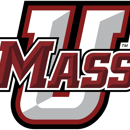Going to school in Massachusetts has taught me two things: 1.) y’all love your Dunks, 2.) Burlington = UVM. But for me, a native Vermonter who grew up in the Old North End of Burlington, a mile off campus from UVM, Burlington is so much more. I’ve pieced together a guide to the area in hopes that the next time you visit, you’ll see the city through the eyes of a local, not a tourist.
The Intervale:
In the mid 18th century, amidst the Revolutionary War, two brothers by the names of Ethan and Ira Allen emerged as early leaders in the state’s founding and involvement in the war. Ethan Allen led the Green Mountain Boy militia, which the Vermont Air National Guard now holds, known casually as the Green Mountain Boys. Ethan Allen lived on a homestead on the banks of the Winooski River, which is preserved and can be visited today. More information can be found here. The area on which the Ethan Allen Homestead sits is now called The Intervale and has great trails for walking, mountain biking, and cross country skiing and is a must-visit for anyone outdoorsy.
The Burlington area stands on what has long been land of the indigenous tribe the Abenaki. Though white invasion has since overtaken almost all of the tribe and its land, Abenaki people still live and work in the Burlington area. There are remnants of the Abenaki language, Algonquin, in the names of local sites, though most have since been white-washed. This land on which the Ethan Allen homestead sits is one of these sites, overtaken by a white man and his history.

The Waterfront:
After its incorporation into the Union in 1790, the shores of Lake Champlain were bustling with industry, merchants, lumbar, and shipbuilding. Take a walk on the Burlington waterfront/Battery Street if you’re interested in several historical buildings from the period that remain today. The Icehouse, which was used to store ice harvested from the lake to be sold to Burlington residents to use as refrigeration can be seen at 171 Battery St. The Old Stone Store, found at 209 Battery St, was used as storage when offloading ships in the bay. 63 College St, across from a popular creemee[1]stand, is known as the Timothy Follett House, owned by a big-name real-estate business in the area. These three historic buildings are now privately owned but can be viewed from the outside.


The Old North End:
The Old North End (ONE), where I grew up, will always have a special place in my heart. Severely gentrified in the last 15 years, I describe the area as the heart and soul of Burlington, though it is often overlooked by tourists and taken advantage of millennial adults and college students looking for cheap rent (and hence driving prices sky-high). If you visit Burlington, I challenge you to embrace the Old North End for the culture and diversity it holds. Some favorites of mine in the ONE includes:
- Nunyans, a bakery and café owned by a local couple and home to “skeggs” (potatoes skins, eggs, bacon, and sour cream)
- Beansie’s Bus, a food truck with AMAZING fries and creemees that has been around as long as I remember and sets up shop in a park next to the police station,
- Butch + Babes, a higher end restaurant with unique spins on beloved dishes (read: Mac ‘n cheese pancakes and burgers)
- Pho Hong, where I’m literally getting dinner tonight, is a Vietnamese restaurant owned by a local family with food that makes me drool just writing about it.
Downtown:
The Downtown area, like the waterfront, is likely what you think of when you picture Burlington. The focal point of Downtown is Church Street, a brick-paved pedestrian-only marketplace. In the 1980s, homeowners were pushed out, mostly immigrants and low-income families, to make room for businesses. Unfortunately, this history is not uncommon. Now, the area is flourishing with shops, restaurants, and arts venues. Since I graduated high school and the onset of the pandemic, the area has seen many changes, including the closure of my favorite coffee shop ever (yes, I’m still sad). Now, my favorites include The Flynn Center for the Performing Arts, American Flatbread restaurant, and Ten Thousand Villages, a store front that buys fairly and ethically from native artisans across the globe and fosters fair wages and sustainability. A wander down church street is a must!

Burlington will always have my heart, and I hope it takes yours the next time you visit. I hope this tour of my hometown, my love letter to the city, and highlight reel, inspires you and offers good recommendations. As the world reopens and you receive your vaccine, come visit! Don’t forget to reach out if you’re in town!!
[1] creemee (noun): term for soft serve ice cream in Vermont.



